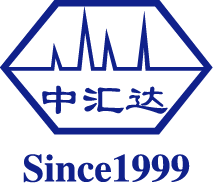|
Work Time Mon to Fri :8:00-17:00 Contact Details Tel::0411-86732112 Tel::0411-86732113 Tel::0411-86730533 fax::0411-86732114 E-mail:zhd@zhonghuida.cn URL::http://www.naturally-grace.com |
Routine Maintenance of Gas Chromatograph
Ensure the air tightness of vaporizing chamber gasket. (I) The service life of silicone rubber pad at the injection port is related to the temperature of vaporizing chamber. In general, the silicone rubber pad can be used for score of times. In case of air leakage, the baseline fluctuates and the analysis reproducibility worsens, as a result, the analysis result will not be accurate. (II) After too many times of punctures on the sample injector, the fragment of silicone rubber pad will enter the vaporizing chamber. If there is too much fragment, the baseline stability may be affected or ghost peaks may take shape in high temperature. Therefore, in order to ensure normal analysis, it is advised to replace the gasket and check air tightness of the vaporizing chamber regularly. II. Clean the vaporizing chamber or liner tube regularly. (I) After long-term use, a large number of high boiling substances will accumulate inside the vaporizing chamber and liner tube. While analyzing high boiling substances, redundant peaks will run off and affect the analysis. Therefore, the vaporizing chamber and liner tube should be cleaned with an organic solvent regularly. (II) Cleaning of the vaporizing chamber: Remove the chromatographic column; under the condition of heating and ventilation, inject absolute ethyl alcohol or acetone from the injection port for several times; and finally wait till the chamber is dry. III. Regular leak detection of gas circuit. (I) In general, leak detection has been conducted before purchasing new instrument. However, leak detection should be implemented once again when sensitivity decrease, retention time lengthening, wavy baseline and other abnormal circumstances have been found during use. In particular, hydrogen gas circuit should have regular leak detection in order to prevent danger. (II) Some control valves use "O" shaped rubber rings, which are likely to leak due to long-term wear. Other factors, such as irregular silicone rubber pad at the injection port and poorly connected chromatographic column, will also lead to air leakage. Therefore, leak detection should be conducted regularly! IV. Clean the thermal conductivity detector (TCD). (I) Replace the chromatographic column with an empty short chromatographic column; connect the carrier gas; increase the temperature in column oven and detection chamber to 200-250℃; and inject 2ml organic solvent from the injection port. Repeat the process for several times, then ventilate till the TCD is dry. (II) It is forbidden to connect electric bridge and current during cleaning. Otherwise the TCD will be damaged! V. Clean the electron capture detector (ECD). (I) The cleaning method for the ECD is the same as that for the TCD. (II) Electronegative organic solvents, such as trichloromethane and carbon tetrachloride, should not be used to clean the ECD. Benzene and n-hexane can be used. The temperature should be 250℃. (III) If the radiation source is Ni63, the temperature of the ECD should be between 250℃ and 300℃; if the radiation source is tritium and scandium, the temperature should not be too high. (IV) While cleaning the ECD, it is necessary to have proper personal protection! VI. Clean the hydrogen flame ionization detector (FID). (I) The cleaning purpose is to improve the insulation level of the detector. (II) In case of serious pollution, remove collector, polarized cartridge and nozzle. The polarized cartridge can be soaked and scrubbed with absolute ethyl alcohol. The base and nozzle can be repeatedly rinsed with organic solvent. The ventilation pipe should also be cleaned thoroughly. The nozzle mouth should be even and smooth: If there are burrs, firstly use oilstone, multi-use file or sand paper to polish till smooth; then rinse it with ethanol repeatedly; and finally dry it with hot and cold air by turns. (III) Insulators that fix these electrodes can be soaked in absolute ethyl alcohol for 10-15 minutes firstly; then be wiped up by silk fabric or gauze; and finally dried for installation. (IV) The FID should be assembled well after the cleaning. While looking down the detector, the nozzle, polarized cartridge and collector should be concentric; while looking from the side, the polarized cartridge and the nozzle mouth should be at the same level. (V) Note: After cleaning, it is forbidden to touch all the accessories by hand. Wear clean gloves before the installation, and all tools must be cleaned and dried before use. VII. Clean the nitrogen and phosphorus detector (NPD) and flame photometric detector (FPD). As the two detectors have basically the same structure as the FID, refer to article VI before cleaning NPD and FPD. Pay attention to rubidium baht cleaning while cleaning the NPD. While cleaning the FPD, pay attention to the cleaning of optical window cleaning; be careful not to expose the photoelectric tube to bright light. TypeInfo: Technical Information Keywords for the information: |

